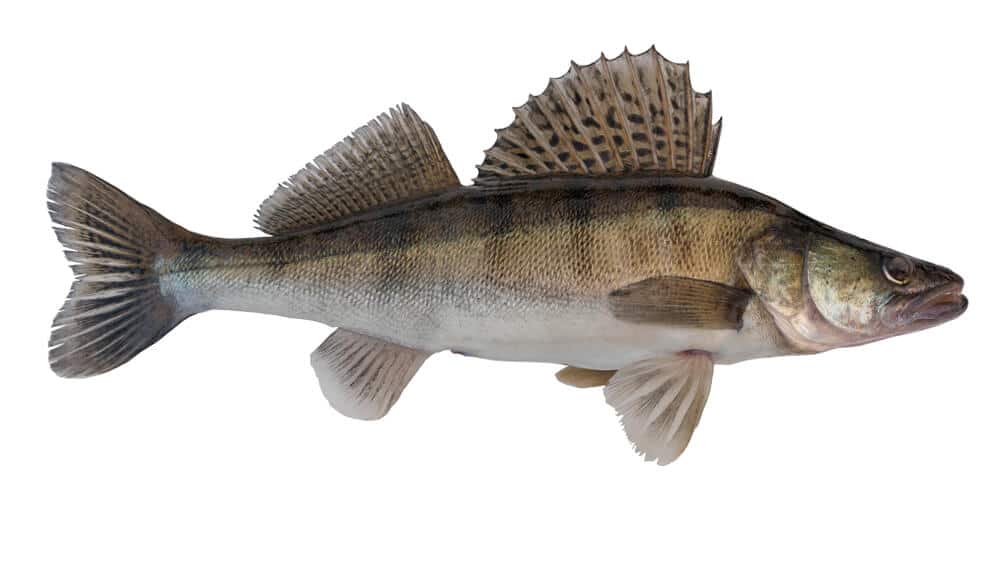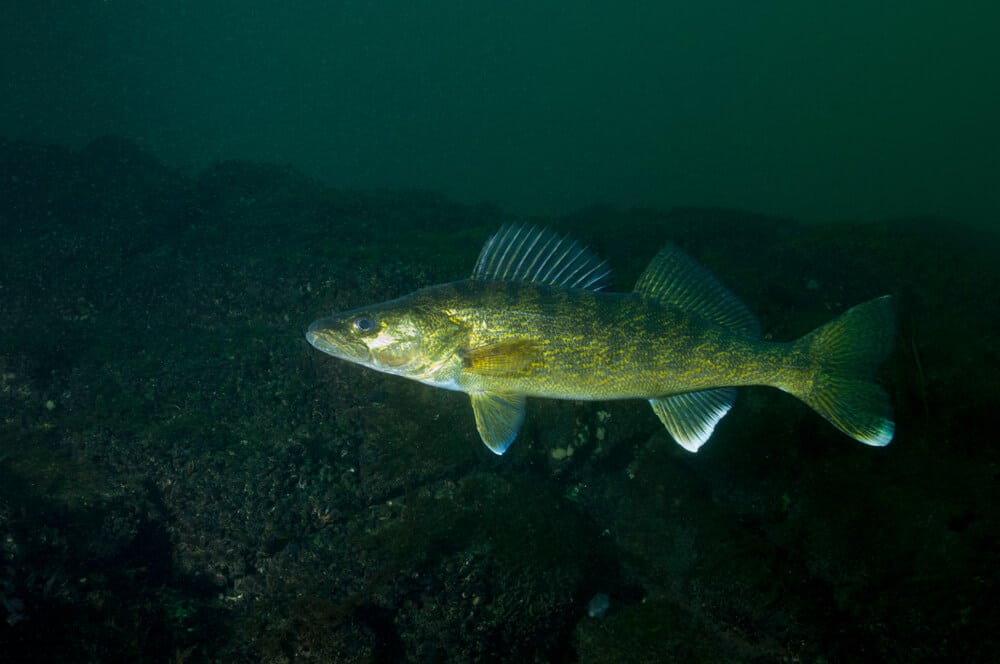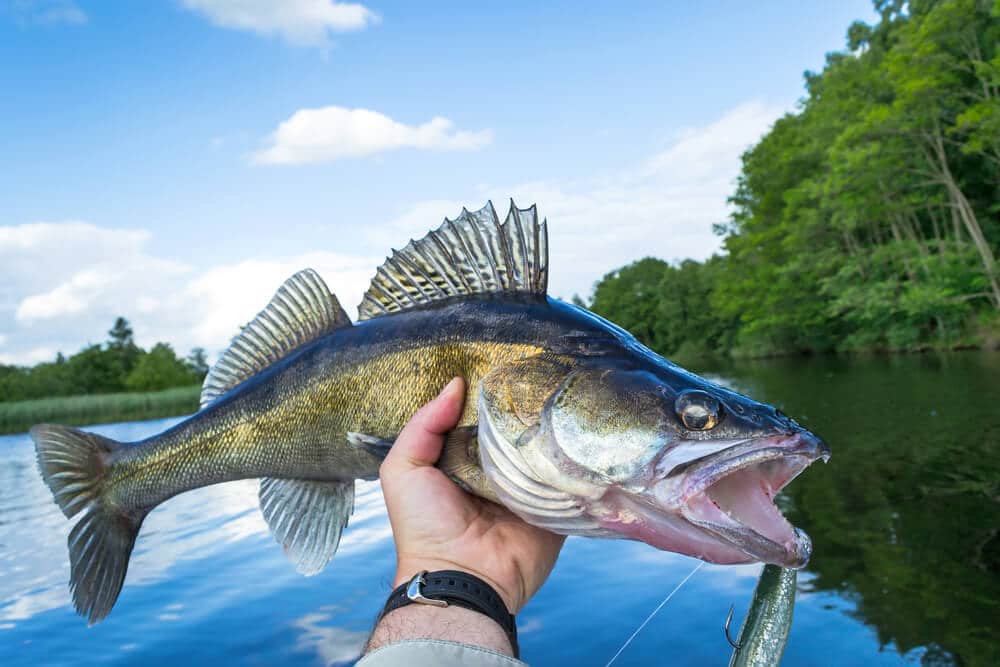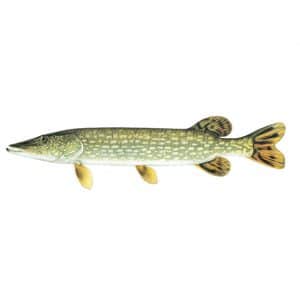Walleye Fish
Walleye, a type of freshwater fish captivate the interest of both fishing enthusiasts and nature lovers. These fish are primarily found in the Great Lakes region and, along the Mississippi River in North America. They have an affinity for waters often choosing to reside near reefs or beneath rocks.

The walleye stands out with its physique and distinct coloring. Its sides display a yellowish to shade with spots on its back. One of its features is its large black eye, encircled by a vibrant yellow ring. This eye not gives the walleye an appearance but also enhances its ability to detect movements in water, which aids them in hunting and evading predators.
Being creatures walleyes have a diet consisting of other fish, crayfish, insects, frogs, clams, snails and worms. On average they weigh between 2 to 6 pounds by the time they reach around 5 years old. However some individuals can grow beyond 12 pounds. Walleyes typically measure between 20 30 inches long but occasionally boast lengths, up to 55 inches.

The reproductive process of the walleye is intriguingly distinctive.
During the spring spawning season between April and May male and female walleyes construct nests on rocks. They create mounds of sediment covering them with leaves and rootlets. After hatching the females carry the eggs in their mouths for 10 to 12 days providing protection during this phase.
Walleyes are known for their ability to remain hidden, from sight due to their nature. Their tough scales, which they can shed in response to threats or environmental changes play a role in maintaining their existence. These fish are also recognized for their swiftness as they can reach speeds of up to 8 miles per hour while chasing prey; however they cannot sustain this pace for extended periods due to oxygen supply through their gills.

From both sporting perspectives walleye holds significant value. Conservation efforts such as hatchery programs have been implemented to enhance their populations. Subsequently alleviate fishing pressure on stocks. As a sought after game fish walleye is highly regarded for its fighting spirit and delectable taste. Its white and flaky flesh possesses a flavor that makes it suitable for cooking techniques including pan frying, grilling and baking; however it is not recommended for stews due, to its delicate texture.
Anglers who are fishing for walleye are advised to use bait, such, as frogs, nightcrawlers, leeches or minnows. It’s important to note that there are state and federal regulations in place to protect and manage the walleye population responsibly. These regulations cover areas like bait usage, commercial fishing restrictions and specific limits, on the number of walleyes that can be harvested from the Great Lakes annually. The U.S. Fish and Wildlife Service strictly enforces rules related to owning, breeding, harvesting and selling walleye to ensure the long term sustainability of this species.


